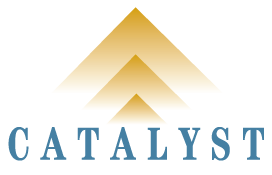The costs of legal services increase every year because the demand for service increases, the nature of the work becomes more complex, and unit prices keep climbing in every market. Legal departments must call on a broad range of measures to address the economic challenges that accompany legal services. Our experience is significant with
- preparing multi-year demand forecasts for legal services
- budgeting internal & external costs
- preparing RFPs and Invitations for Strategic Pricing
- convergence and partnering with law firms
- non-hourly pricing for external counsel
- litigation management
View our podcast, sponsored by Buying Legal Council
Managing the Cost of Legal Services

Changing Law Firms
With an hourly billing model, a company can take its time to phase out legacy firms as part of its convergence program. Fixed and hybrid fee arrangements require other approaches to manage law firm transitions. The first approach is to carve out some on-going files for legacy firms and reduce the fixed fee accordingly. The second is to have the successful primary firm oversee, pay and phase out the work of the legacy firms as part of its fixed fee. This second approach contains costs and greatly reduces the amount of administrative time that law departments would otherwise invest.
How In-House Counsel Can Best Manage a Law Firm Change
With an hourly billing model, a company can take its time to phase out legacy firms as part of its convergence program. Fixed and hybrid fee arrangements require other approaches to manage law firm transitions. The first approach is to carve out some on-going files for legacy firms and reduce the fixed fee accordingly. The second is to have the successful primary firm oversee, pay and phase out the work of the legacy firms as part of its fixed fee. This second approach contains costs and greatly reduces the amount of administrative time that law departments would otherwise invest.
Evaluating Preferred Law Firms
Performance plans provide the structure and content to evaluate preferred law firms. Plans and related metrics – responsiveness, results, efficiency, total legal spend, and unit costs – should be embedded in terms of engagements and multi-year partnering agreements. These metrics are typical and supplemented by targets and specific initiatives.
External Counsel & Costs
This is a collection of 15 articles and case studies regarding external counsel and costs. They address scoping, budgeting, pricing with alternative fee arrangements, and linking law firm performance to legal fees. Three articles address sourcing legal services: managing the legal supply chain; negotiating with law firms; and seven critical steps for a new deal.
7 Critical Steps for a New Deal
Successfully reducing legal spend in 2023 cannot take the form of a race to the bottom of the barrel for lower hourly rates. Seven critical steps are described: Secure 2 years’ worth of detailed data from law firms; prepare a multi-year forecast of requirements for external counsel; innovate in configuring primary and other firms by region with longer-term commitments; ensure Legal and Procurement professionals are proficient in non-hourly arrangements; apply optimal staffing patterns to individual matters; evaluate firms every 6 months against 4 KPIs; and have the CLO sign-off on a written project plan to implement the 6 previous steps.
Pricing and Negotiating Legal Services
A pathway to non-hourly fees for regular and complex legal work is outlined. The most appropriate configuration of alternative fee arrangements will stimulate efficiency, effectiveness and innovation in external counsel. The article simulates a costing of work allocation to multiple firms. Four factors are proposed when evaluating the projected costs of external counsel when conducting a sourcing initiative.
Six non-financial and eight financial elements are listed as objectives when negotiating fees with external counsel. Provisional work allocations by law firms and two rounds of fee negotiations are described. Negotiation logistics and administrative support requirements are proposed.
Abandoning Hourly Pricing for Legal Services
Several building blocks for pricing were presented. These include multi-year forecasts of the demand for legal services, why alternative fee arrangements (AFAs) should be prioritized in Requests for Proposals (RFPs), the importance of setting firm pricing targets when sourcing legal services, the significant impact of developing optimal staffing distributions for various categories of legal work, replacing individual billing rates with blended rates, and finally how to pay for law firm performance. Four law department surveys form part of the article.
Sourcing and Scoping Legal Services
Several steps for the Law Department and Procurement are described to formalize a collaboration arrangement to source external legal services. These include a formal program, non-financial objectives and financial targets, and detailing responsibilities for legal leadership, legal operations, and Procurement.
Scoping is that portion of the Request for Proposals designed to inform law firms of the scope of work to achieve the company’s objectives. This part of the article focuses on portfolios of legal work and multiple jurisdictions. The importance of historical data, preferred practice patterns by legal specialty for law firms, and four considerations when developing multi-year projections are outlined.
Negotiating Legal Fees
Six non-financial and eight financial elements are listed as objectives when negotiating fees with external counsel. Provisional work allocations by law firms and two rounds of fee negotiations are described. Negotiation logistics and administrative support requirements are proposed.
Can Perpetual Power Corp. Get Off the Clock?
This case study shows how three different law firms can offer simpler work intake and allocation protocols, and move away from hourly billing in order to secure predictable pricing that is effective for multi-year portfolios of legal work. The prerequisite is a well-drafted RFP based on solid data analytics. The scope of work should set hour work volumes and complexity levels for each legal specialty.

